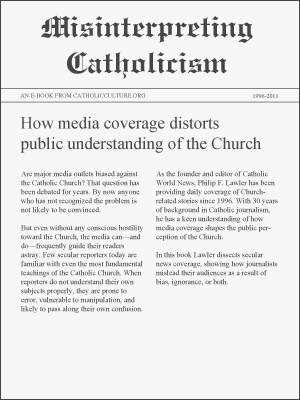Easter: May 17th
Saturday of the Fourth Week of Easter
Other Commemorations: St. Paschal Baylon, Religious (RM)
» Enjoy our Liturgical Seasons series of e-books!
The Roman Martyrology commemorates St. Paschal Baylon (1540-1592), who lived and died in the kingdom of Aragon, Spain. He spent his early years as a shepherd and often gave religious instruction to the shepherds on the hills of Aragon. At the age of twenty-four, he entered the Franciscan Order and embraced the humble, austere life of a lay brother. He was noted for his devotion to the Holy Eucharist. Pope Leo XIII declared him protector of all Eucharistic Congresses and works.
Meditation for Saturday of the Fourth Week of Easter:
The Power that Regenerates the World
Earthly history and the workings of the cosmos undoubtedly continue their course and are not identified with the rate at which the Kingdom of Christ develops. In fact, pain, evil, sin, death, yet claim their victims, in spite of the resurrection of Christ.
The cycle of one thing succeeding another, the cycle of becoming, is not at a standstill. If it were, history would be at an end! And so facts and events are continually being repeated and give rise to thoughts of an irremediable conflict here on earth between the two kingdoms, or, as St. Augustine said, between the two cities. Think, for example, of the contrast which is to be found in this Holy Year between celebration of the Redemption on the one hand and on the other hand the offenses against God, the misdeeds committed against man and, at bottom, the challenges to Christ which are continually being launched.
This is the most impressive aspect, the most mysterious dimension of the historic dialectic between the forces of good and the forces of evil: the fact that obstacles are raised or indifference is shown to the forces of Redemption let into the world by Christ through his Resurrection as the principle which resolves the conflict between death and life.
The world is in need, today as yesterday, for the "new people" to remain in its midst, among the vicissitudes, the conflicts, the variations which not seldom lead to situations which are so difficult, sometimes even dramatic. The world has need of this people which will dedicate itself with humility, courage and perseverance to service of the Redemption and give concrete form, in good Christian conduct, to the regenerating power of Christ's resurrection.
This is the function which Christians have as evangelizers and witnesses to the Resurrection in history.
—Excerpted from Prayers and Devotions from Pope John Paul II, edited by Bishop Peter Canisius, 1984
St. Paschal Baylon
 Paschal Baylon (named after the day of his birth and death: Pentecost Sunday—Pascha Pentekostes) was a simple, pious shepherd boy who later became an ardent spiritual son of St. Francis and the heavenly patron of adorers of the Most Blessed Sacrament. He belongs to that illustrious circle of saints who, by heroic holiness of life, refurbished the Church's crown that had been desecrated by the heretics of the sixteenth century. He hailed from the Spanish section of Valencia in the year 1540, and died at the age of 52. As he lay dead upon the bier, he opened and closed his eyes twice when the sacred species were elevated at the consecration. Leo XIII declared him the heavenly patron of all Eucharistic leagues and societies.
Paschal Baylon (named after the day of his birth and death: Pentecost Sunday—Pascha Pentekostes) was a simple, pious shepherd boy who later became an ardent spiritual son of St. Francis and the heavenly patron of adorers of the Most Blessed Sacrament. He belongs to that illustrious circle of saints who, by heroic holiness of life, refurbished the Church's crown that had been desecrated by the heretics of the sixteenth century. He hailed from the Spanish section of Valencia in the year 1540, and died at the age of 52. As he lay dead upon the bier, he opened and closed his eyes twice when the sacred species were elevated at the consecration. Leo XIII declared him the heavenly patron of all Eucharistic leagues and societies.
One day Paschal heard the bells of a convent announce the approaching consecration at Mass. Such an ardent longing for God overcame him that, prompted by yearning and love, he involuntarily cried out: "O God, most worthy of all adoration, please let me see You!" Hardly had he uttered the prayer when a glowing star appeared in the sky. As he watched, the heavens opened; the star disappeared and was replaced by a chalice with the Host, flanked by two adoring angels. Christian art has selected this vision to show his chief virtue, viz., love for the most holy Eucharist.
—Excerpted from The Church's Year of Grace, Pius Parsch
Patronage: cooks; shepherds; male children; Eucharistic congresses and organizations (proclaimed 28 November 1897); priestly vocation; Bisenti, Italy; Castelnuovo, Assisi, Italy; Montebello, Orciano di Pesaro, Italy; Obado, Bulacan, Philippines; diocese of Segorbe-Castellón de la Plana, Spain
Symbols and Representation: In adoration before a vision of the Host; Monstrance; Franciscan habit; Before the Eucharist
Highlights and Things to Do:
- Read more about St. Paschal:
- Tomie de Paola wrote a children's book Pascual and the Kitchen Angels that retells some of the goings on in the kitchen with St. Pascal.
- St. Paschal's tomb is located in Sanctuary of St. Paschal Baylon, or de Sant Pasqual, popularly known as El Sant in Villarreal, Spain.






